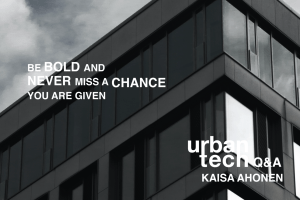A quick Q&A with Monica Maria Moeskær, Design anthropologist & Senior Project Manager at the Danish Design Centre (DDC).
Tell me more about DDC – and what you’re most excited about…
At the moment we are very excited about startups hacking, rethinking and challenging the status quo – especially when looking into design solutions that address our global challenges as eg. the climate crisis.
We are thrilled about design for sustainability and the role of design in creating a sustainable future, while at the same time unfolding the SDGs and transforming them into a huge business potential. Right now, we see a move in the field of design from human-centred to planet-centred – still with the people’s and society’s needs at the core – but also more focused on holistic and systemic solutions.
What is one little known fact about Danish Design that you can share?
A little known fact is that Danish design is much more than chairs and teacups. That design is the mindset and strategic approach to create innovation – radical and/or incremental. It is actually a well-structured and systematic approach to develop strategies, products, services, systems and experiences – all through an experimental and iterative process.
What is your top tip for visitors to Denmark who are interested in design?
For a great collection of the Danish design traditions and classics visit the Design Museum Denmark.
For a broad collection of contemporary and modern art, placed in beautiful green surroundings, go visit Louisiana.
For a more experimental contemporary art and urban design experience visit Copenhagen Contemporary at Refshaleøen. The Island was originally the old Copenhagen Harbor and for more than a hundred years home to the Shipyard B&W. Today it is a nice example of contemporary architecture and it’s worth a visit for people with a special interest in industrial architecture, urban planning and food – with the Streetfood Market and lots of small local entrepreneurs spread around the area.
Another venue that’s worth a visit is the Nikolaj Kunsthal, an art collection in the old church in the City Centre. The church is redecorated and used as an exhibition space and event space.
Any recommended reads (books / articles) or listens (podcasts perhaps) as people prepare to travel here?
I will recommend following two reads about the City of Copenhagen and sustainability in the
New York Times and on Curbed.
And what has design and business growth have to do with each other?
If you are still wondering what design and business growth have to do with each other, I’ll recommend following McKinsey report and talk:
- Talk with wrap-up of the key findings from the McKinsey report (watch the first 10 minutes)
- McKinsey report: The business value of design (incl. Full Report download)
Last but not least, we also find from our own survey results from the Danish companies that 75% of the companies working systematically with design experience that design has a positive impact on the bottom line. For the companies that use design strategically, the number is 92%.
Read more and see all numbers at the Danish Design Center website: danskdesigncenter.dk/en/
Learn more about Monica – and follow her on Twitter and connect on LinkedIn.
Stay updated on the Danish Design Centre: Twitter | LinkedIn |Instagram





